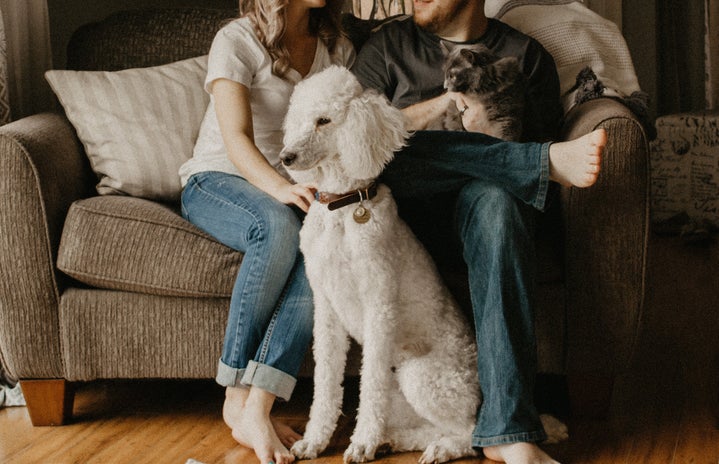The human species represent the most advanced stage of a long process of evolution. Millions of years ago, the formation of humankind started from our oldest identified ancestors, and since then, their livelihoods depended in ways more than one on animals that evolved simultaneously. Several studies suggest that the dog was the first animal to have been domesticated during the upper Palaeolithic age and while that in itself doesn’t prove much, it sure does point to the early recognition of their relative importance as human companions. Domestic dogs were likely to have assisted humans in hunting (as a student of history, I couldn’t prevent myself from pouring whatever little knowledge I had onto this article). Since then, their functional importance as assistants evolved into their importance as companions and family members. Today, their commodification in the markets has also put prize tags up their collars such that certain breeds have become markers of the owners’ economic stature in society. Thus, in urban households, dogs are starting to become a very prized status symbol.
If you happen to visit Sunder Nursery on a regular Sunday morning, you’ll perhaps find Delhi’s elite (dogs and owners alike) parading through the garden like showstoppers, several others stargazing with eyes fixated on them. These dogs dressed in the brightest of colors look like pieces of artwork and just when you’d think they couldn’t get any better, they’d walk on twos and baffle you with their finesse.
A familiar human desire is wanting things that we possess to be reflective of who we are and many owners try to project their personalities and positions onto such things as cars and clothes but also, animals. As they proceed with this, they invest extravagantly in the animals’ diet, wardrobe, grooming, and training, going out of their ways to provide them with services animals have survived millenniums without and remain oblivious to. Today, capitalist endeavors pervade all aspects of a modern consumer’s living and have actualized the ideas of pet jewelry, accessories, hotels, and resorts.
While the apparent showpiece aesthetic of Delhi’s dogs in itself is not the problem, its translation into their actual treatment as lifeless, decorative objects only worth their physical beauty is deeply problematic. Separation from their dogs can weigh heavy on the hearts of owners but sometimes it stems from a genuine concern for the dog and moves it towards a better future. However, newspapers laden with several cases of abandonment of aged dogs that were cherished puppies point to the “burden” they become once they lose their childhood appeal. It also reflects the owners’ prejudices of viewing dogs as similar to cars that are abandoned once they lose their glow and no longer remain objects of beauty adding to the owners’ prestige.
The buying and selling of purebred dogs depend on the blatant violation of ethical considerations. In many cases, people bring these beings into their lives at the cost of their livelihoods and wellbeing. For example, dogs like Saint Bernards and Siberian Huskies that can now be spotted in large numbers in households in Delhi are mountain dogs. Their bodies are neither designed for nor can adapt to the climates in cities like Delhi and Mumbai. A desire to keep them as pets in such cities indicates either the owner’s blissful ignorance or complete lack of respect for the animal’s life.
The commodification of our loyal companions and the demands for purebred dogs of foreign breeds in the market subjects them to inhumane conditions in puppy mills and other breeding facilities. Except, these lack facilities. While I don’t say that all breeding places thrive on the neglect of dogs, a lot of them do and I aim to bring that into the public view. A lot of these places, whether big or small, are obnoxiously overpopulated. Yet, continuous breeding takes place until the female is pushed to fatigue-induced death and the purebred puppies are born with several deformities. Hence, purebred puppies that are already more susceptible to genetic diseases are now born with deformities and are subject to living in overpopulated spaces that lack both sanitation and ventilation facilities, furthering a negative impact on their health.
India is home to more than 35 million free-roaming dogs that face human wrath on the roads. In that respect, despite where they come from, several dogs lay on the receiving ends of severe harm at least once in their lives. While I do advocate for a better life for all dogs and animals, encouraging people to be more humane to them, I don’t advocate sticking to the extremes. Often, appeals to adopt indigenous puppies come with the undeniable isolation of purebred dogs and their owners thus creating a deep void between the two. The approach to promote rescue dogs feeds on desirable neglect for purebred ones such that the prosperity of one is seen as attainable only at the cost of the other. Trying to guilt trip owners for wanting purebred dogs is an approach also employed by several non-governmental organizations that foster and find homes for rescue dogs. This approach mobilizes owners through the emotive effects of an ‘adopt don’t shop’ idea. But more often than we can understand, getting a dog into our homes and lives is as much a decision of the heart as the mind, emotional and practical in equal respects. Neither is there an established correlation between the isolation of one and the benefit of the other, nor should love for rescue dogs translate to hostility towards purebred ones and vice versa. Hence, what I advocate is humility and compassion for all animals irrespective of where they come from.


